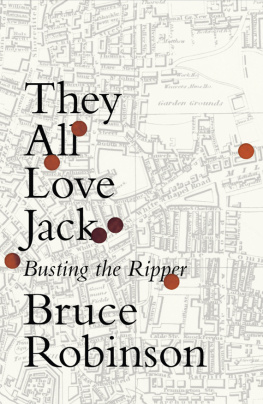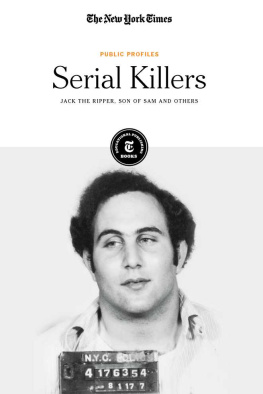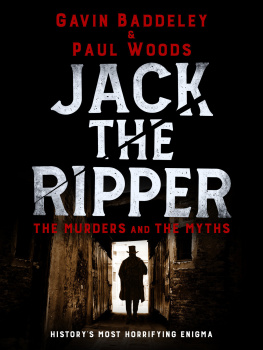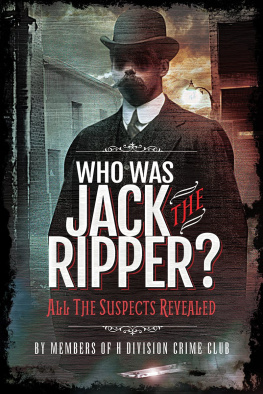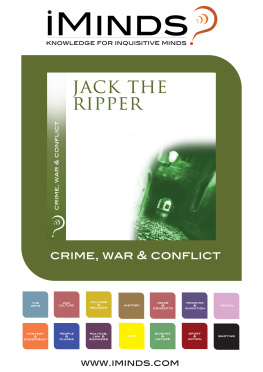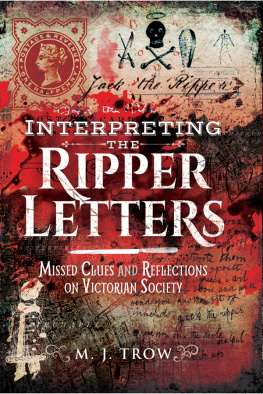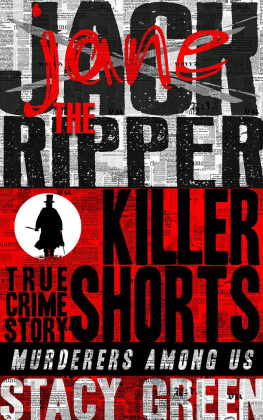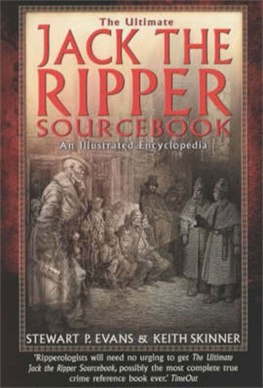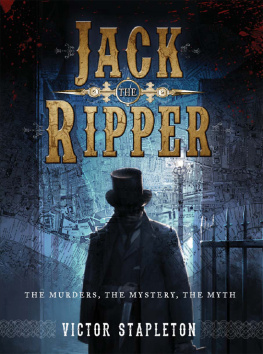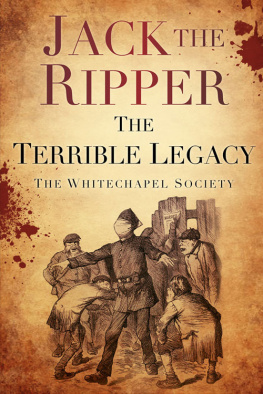FICTION
The Peculiar Memories of Thomas Penman
Paranoia in the Launderette
FOR CHILDREN
The Obvious Elephant
Harold and the Duck
The page numbers in this index relate to the printed version of this book; they do not match the pages of your ebook.
Page 18: Universal History Archive/UIG via Getty Images
Page 152: Private Collection/Look and Learn/Illustrated Papers Collection/Bridgeman Images
Page 166: Hulton Archive/Getty Images
Page 176: Private Collection/Look and Learn/Illustrated Papers Collection/Bridgeman Images
Page 183: Stephen Barnes/Religion/Alamy
Page 338: The Royal London Hospital Archives & Museum
Page 366: TopFoto
Page 444: Gregory S. Paulson/Corbis
Page 651: New Statesman
Page 740: Hulton Archive/Getty Images
The following images are reproduced courtesy of the London Metropolitan Archive, City of London: page 75 (original held at the Royal London Hospital Archives & Museum); page 120 (original held at the Royal London Hospital Archives & Museum); page 182 (original held at the Royal London Hospital Archives & Museum); page 382 (top and bottom); page 385; page 388 top and bottom; page 390 (original held at the Royal London Hospital Archives & Museum), page 391; page 458; page 459; page 466; page 467; page 468 left and right; page 475; page 477; page 726; page 727, page 728.
The following images are reproduced courtesy of the Metropolitan Police Service, via the National Archives, Kew: page 145, MEPO 3/142 Pt 2 (302, 303 reverse); page 163 left and right, MEPO 3/140; page 334, MEPO 3/142 Pt1 (137, 138, 139); page 336 top, MEPO 3/142 Pt1 (137, 138, 139); page 349, MEPO 3/142 pt 1 (94v-95v); page 350, MEPO 3/142 Pt1 (96); page 354, MEPO 3/3157; page 355, MEPO 3/142 Pt2 282, 283 reverse); page 369 left, MEPO 3/142 Pt2 (282, 283 reverse); page 369 right, MEPO 3/142 Pt2 (282, 283) page 370, MEPO 3/142 pt 1 (128-130); page 371 top, MEPO 3/142 Pt1 (131, 132, 133 reverse); page 371 bottom, MEPO 3/142 Pt3 (483, 484, 485 reverse); page 372, MEPO 3/142 Pt3 (545, 546); page 373 top, MEPO 3/142 Pt3 (517, 518, 519 reverse); page 373 bottom, MEPO 3/142 pt 2 (240-242); page 374 top, MEPO 3/142 Pt2 (333, 334, 335, 336); page 374 bottom, MEPO 3/142 pt 1 (5); page 375, MEPO 3/142 Pt3 (503, 504, 505, 506 reverse); page 378, MEPO 3/142 pt 1 (90-91); page 384 bottom, MEPO 3/142 Pt3 (526); page 387 bottom, MEPO 3/142 Pt2 (293); page 389, MEPO 3/142 Pt3 (520, 521 reverse); page 394, MEPO 3/142 Pt3 (514, 515); page 395, MEPO 3/142 Pt2 (192, 193, 194); page 398 top, MEPO 3/142 Pt2 (340); page 398 bottom, MEPO 3/142 Pt2 (339, 341, 342); page 430, MEPO 3/142 Pt3 (491); page 457 top, MEPO 3/142 Pt2 (339, 341, 342); page 457 bottom, MEPO 3/142 Pt2 (340); page 460, MEPO 3/142 Pt1 (179, 180, 181, 182 reverse); page 472, MEPO 3/3155; page 511 top, MEPO 3/142 Pt1 (149); page 511 bottom, MEPO 3/142 Pt1 (149 reverse); page 512, MEPO 3/142 Pt2 (269, 270, 271); page 513, MEPO 3/142 Pt2 (269, 270, 271); page 514, MEPO 3/142 Pt3 (556); page 533 top, MEPO 3/142 pt 1 (14-15); page 533 bottom, MEPO 3/142 Pt3 (500, 501, 502); page 538, MEPO 3/3155; page 540, MEPO 3/3155; page 543, MEPO 3/3155; page 554, MEPO 3/142 pt 1 (124-127); page 555, MEPO 3/142 pt 1 (160-162); page 561, MEPO 3/142 pt 1 (124-127); page 567 top, MEPO 3/142 Pt1 (74); page 567 bottom, MEPO 3/142 Pt1 (74 reverse); page 568, MEPO 3/142 pt 1 (121-123); page 570, MEPO 3/142 Pt3 (520, 521 reverse); page 608, MEPO 3/142 Pt2 (268); page 671 bottom, MEPO 3/142 Pt2 (266, 267); page 730, MEPO 3/142 Pt2 (272 reverse); page 795 top left, MEPO 3/142 Pt2 (298, 299, 300, 301); page 795 bottom, MEPO 3/142 pt 1 (82-84); page 801, MEPO 3/142 Pt2 (272 reverse).
The following images are reproduced courtesy of the National Archives, Kew: page 659 left, HO 144/1640-A50678/272; page 659 right, HO 144/1640-A50678; page 720, HO 144/1638-A50678 (D29); page 721, right HO 144/1639-A50678/202.
The author and publishers are committed to respecting the intellectual property rights of others and have made all reasonable efforts to trace the copyright owners of the images reproduced, and to provide appropriate acknowledgement within this book. In the event that any untraceable copyright owners come forward after the publication of this book, the author and publishers will use all reasonable endeavours to rectify the position accordingly.
First published in Great Britain in 2015 by
Fourth Estate
An imprint of HarperCollinsPublishers
1 London Bridge Street
London SE1 9GF
www.4thestate.co.uk
Copyright Punditbest Ltd 2015
The right of Bruce Robinson to be identified as the author
of this work has been asserted by him in accordance
with the Copyright, Design and Patents Act 1988
A catalogue record for this book is
available from the British Library
Cover photograph Hulton Archive/Getty Images (Leighs Map of London showing Shoreditch, Wapping and Whitechapel areas. 1818)
All rights reserved under International and Pan-American Copyright Conventions. By payment of the required fees, you have been granted the non-exclusive, non-transferable right to access and read the text of this e-book on-screen. No part of this text may be reproduced, transmitted, down-loaded, decompiled, reverse engineered, or stored in or introduced into any information storage and retrieval system, in any form or by any means, whether electronic or mechanical, now known or hereinafter invented, without the express written permission of HarperCollins.
Source ISBN: 9780007548873
Ebook Edition October 2015 ISBN: 9780007548897
Version: 2015-09-09
5
Clench the fingers of the right hand, extend the thumb, place it on the abdomen, and move it upwards to the chin, as if ripping open the body with a knife.
Richardsons Monitor of Freemasonry (1860)
The Double Event, as the Stride/Eddowes murders were christened by their perpetrator, is not original to the Saucy Jacky postcard he sent, but was a vulgar colloquialism of the age. It meant to simultaneously suffer venereal disease of both the anus and the genitals. Jacks choice of such a pleasantry may be trivial, but I dont think it is. Although characteristic of a pun, I think it had a more substantive meaning for the murderer, and I interpret the Double Event as both sobriquet and expression of disgust.
The Rippers choice of target was opportunistic, but not accidental. Self-evidently he was looking for a type, his selection of a victim in life no less specific than the signature he wrote into their deaths. This fabulously cruel man didnt rip the sex out of East End whores because he lacked the wit to kill elsewhere. He killed in Whitechapel as part of his statement. He wanted sex as low as it got. The furnace of his rage was in his victims womb, the filthiest part of her being, and he was disgusted with her for what his hatred would have him do.
Theories seeking to link these women to their killer (as in Clarence) are as risible as the use Freemasonry attempts to make of them. The victims were linked only in circumstance, and insomuch as they were available. As far as this narrative is concerned, Catherine Eddowes life lasted about thirty-five minutes: from the time she left the police lock-up to the time the Ripper killed her. Many accounts detail whats known of her past, her lousy life and those in it, but none of that is of much interest here. Eddowes biography matters no more to me than it did to the man who eviscerated her. On her drunken arrest earlier that evening she gave her name as Nothing, and thats just about it. She was just another bit of trash in the ugly East End rain.
A psychopath is at his most dangerous when hes having fun. Jack was having a lot of fun, playing off the angels and the ogres in his own homicidal fairy tale. Authority would feel the weight of his spite, and women the depths of his revenge. Angels dont fuck, and in the vernacular of his hatred, I believe thats how Jack saw women, as either mother-angels or whores. Its my view that he killed these women as surrogates, punishing them for the sexuality of another, and I believe one woman in particular was on his mind. She was a mother-angel who had proved herself lower than the filthiest whore. Until he got to her, and destroyed her, he owned her in Eddowes and the rest, cut out her mother-part for a trophy, like a huntsman with the head of a vanquished animal. He was walking with God, as the great detective Robert Ressler characterises the mindset of such a psyche, and what fault there was belonged to the victims.

